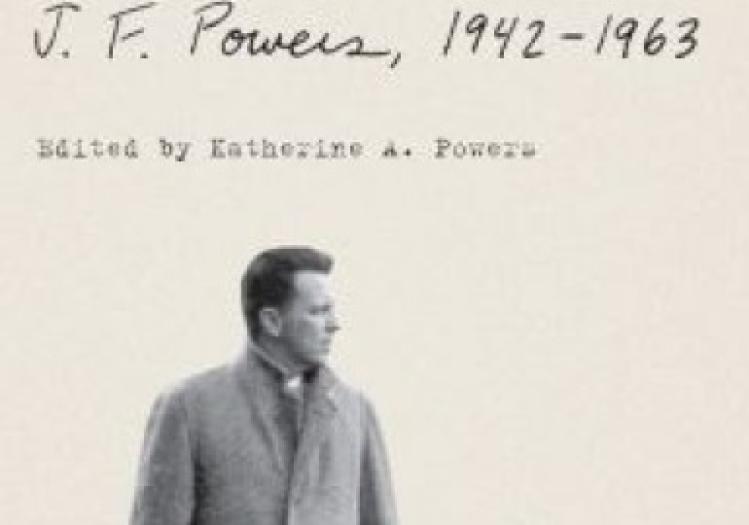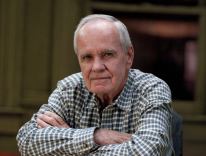
“When a writer is born into a family,” Czeslaw Milosz balefully warned, “the family is finished.” But who’s at risk from a writing relative—ancestors or descendants? Ancestors, of course, don’t stand a chance of getting their own back. But books by the children of major American writers of the twentieth century now constitute a subset of contemporary autobiography. Such memoirs give Milosz’s harrowing prediction an ironic twist. Who, after all, really finishes off a literary family, if by “finish” is meant getting the last (published) word?
Susan Cheever, Janna Malamud Smith, Alexandra Styron—daughters of three iconic American writers—have each written striking memoirs about their variously distant or impossible but deeply beloved fathers. The candor and generosity of these books, as James Wood notes in a recent New Yorker essay (July 22), give us “tender, scouring portraits” in which the daughters “intelligently analyze the asymmetries of growing up in a household dominated by the needs of a male creator, and the costs to the women who enabled that creativity.”
Katherine A. Powers, the editor (a term too pedestrian for the organizing angel at work here) of her father’s letters, grew up in such a household. But “household” is precisely what the restless Powers tribe lacked, perpetually on the move from rented houses—usually near St John’s Abbey in central Minnesota, the setting of Powers’s two novels and most of his stories (also the locale, somewhat later, of Garrison Keillor’s Lake Wobegon)—or in mad dashes to peat-fireplace leases in Ireland. Above all, this was a family ever uprooted, trailing the flight patterns of the “male creator” whose art—or its quixotic requirements—was held sacred by both parents. In all, there were five children, Katherine the firstborn, named for Katherine Anne Porter, a keen promoter of J. F. Powers’s stories.
The letters and occasional journal excerpts that form the book, including several from Powers’s wife, cover the years from his prison time as a conscientious objector during World War II to his receiving the National Book Award in 1963 for Morte d’Urban, his great comic novel. This might, for a different writer, be a rags-to-riches story. But the trademark Powers irony is at work even in his daughter’s narrative arc, for sweet as the award must have been, it was hardly a launch to smooth sailing.
This narrative trajectory, which leaves out the second half of Powers’s life, does something better than chart a success—it reveals a dynamic midcentury Catholic world buoyed by lyrical dreams of artistic endeavor and shared ideals composed of a lost blend of conservative passions (the Latin Mass) and a progressive social agenda. This swath of cultural time usually is too easily lost in the louder drumrolls of “the ’60s” that lie just beyond the frame of this book. Even Vatican II is barely a blip on the soundtrack of the story.
And it is a story, not just a dump of lively letters, that Katherine Powers arrays here. The world of the letters, viewed in retrospect, is fun-loving and also fierce in its postwar aspirations, still vibrantly attuned to calls for social justice rising out of the upheavals of the Depression from such figures as Dorothy Day and the Catholic Worker movement. Yet it can all look, now, heartbreakingly deluded in the face of America’s ballooning imperial presence and the rise of a consumer culture dependent on a robust line of credit.
Jim Powers met Betty Wahl when her English teacher at the College of St. Benedict, Sr. Mariella Gable, sent him the manuscript of a novel her student had written. She asked Powers, whose stories were just appearing to some note in Accent magazine, to remark on it. Powers took the train northwest from St. Paul where he was working at a hospital (part of his parole arrangement) to discuss the novel (which he admired) with the young author. Two days after they met, he proposed to Betty Wahl. She accepted. They married in April 1946, having met only five times in the intervening six months, perhaps because his parole guidelines required permission to travel outside St. Paul.
The daily love letters Jim wrote Betty during their engagement are eloquent not only of his ardor, but of his determination not to be tied down in the manner of gainful husbands. She should know this husband would refuse to “go along [that is, look for a job] just because you were my wife and asked it, or because we had twelve children who needed milk and bread.” He tendered these admonitions, apparently, as his side of an honest contract. “I am not saying I’d poison the children,” he offers concilatorily, “but you’d better take another reading if you think I can be domesticated and made to like it.”
He wants her to know what she’s getting into—if that is ever possible for marrying people. “I am like Daniel Boone cutting my way through that bourgeois wilderness,” he writes heroically a month before the wedding, “the first one who ever didn’t lose himself in a corporation or go into business for himself. I hope—I sincerely pray—you are not making a mistake about me.”
Powers was not proposing some louche hipster existence. No beatnik, he. Both he and Betty were eager proponents of the spirited Catholic movements of the era including “rural lifers” (emphasis on lots of kids), liturgical reform, and contemporary religious art. By settling near St. John’s in Collegeville, they were attaching themselves to what they half-jokingly called “the Movement,” a sparkling group of friends, artists, priests, and monks but also young married couples, including Eugene and Abigail McCarthy for example, people for whom family life was a vocation—and an adventure. Jim’s don’t-fence-me-in admonitions may have struck Betty not as warnings but assurances of that adventure, a union marrying them not only to each other but to their pursuit of art among like-minded idealists.
Powers was true to his word. Though later in life he accepted a position as writer in residence at St. John’s, during the period of this book when all five of his children were born, he turns down teaching and lecturing offers with baffling insouciance while despairing a page later of the family’s near destitution. One of his most frequent correspondents is Harvey Egan, a priest who was not only a fan of his fiction but a patron, source of loans at key moments.
Jim’s determination to marry Betty is never in question in his passionate premarital communiqués. Nor do the letters, over time, suggest that their bond was broken, no matter how frayed their life, how untenable their solutions (mostly flights to supposedly cheaper Ireland). Still, he can sound bitter. Several years and one child into his marriage, in a letter to Robert Lowell (a friendship made at Yaddo and kept for life), he advises, “Stay single. That way you can afford to be yourself.”
His idea of the artist’s vocation is never more Catholic than in this sense of the aloof requirements of the calling, the need to be separate, singular, married—but not to a person. “I just want to go away,” he writes in 1954 from Minnesota to Jack Conroy, the proletarian novelist. “I must say you would’ve enjoyed the sight of me in Ireland,” he goes on, rouging up his life there, “having my morning coffee before the fire, unfolding my Irish Times, listening to music from the BBC and from my stomach, full of good bacon and toast and marmalade; or at the Leopardstown Racecourse; or walking along the sea.”
For her part, Betty wrote “on a strict schedule,” her daughter notes in the book’s tantalizingly brief afterword (“Growing Up in This Story”). Betty eventually published a novel, and she sold stories to magazines, including the New Yorker. And she “cooked every meal from scratch and sewed most of our clothes; she went to her parents for aid; she scrimped, rationed, and cobbled together the wherewithal for our survival.”
All this while Jim did—or did not—write, moving subject-verb-object around at his glacial pace. He was a great fritterer of time, filling his days by reading the daily papers, following baseball and horse racing (a passion), trolling the auction houses (especially in Ireland) for useless but lovely bits and pieces. And he wrote these often “festive” letters, as Katherine Powers remarks, while assiduously refusing offers of teaching positions that would have resolved the family’s uncertainty and—not to finesse the situation—poverty. In his spare time (in a sense, all he had was spare time), he developed geographical claustrophobia in Stearns County, Minnesota, and plotted escapes to Ireland. Once in Ireland he reversed the process of frustration, and fled back to Minnesota, progeny in tow.
There is, naturally, a feminist reading of this narrative in which wife-and-mother sacrifices her gifts to keep the vigil light flickering before the tabernacle of male creativity and, not incidentally, keeps the wolf from the rental door through her heroics. It’s the old feminine religion, not much professed anymore.
Such a reading, while not unjust, misses the more expansive significance of this “autobiographical story of family life” (as the directive subtitle puts it). Considering the assembled letters, the daughter-editor comes to believe that the precarious life of the Powers family “could be described as a folie à deux,” both parents united in unflinching service to the “exceptional being” and “true artist” Betty believed her husband to be. Though he wasn’t a gambling man and his indulgences ran to small pleasures, he had a taste for playing the horses, and his relationship with the New Yorker was a series of risky bets, providing serious money, but on breathtakingly uncertain terms for a family of seven.
Still, Betty’s bet on his talent was well placed. Powers was and remains an original, indispensible because without parallel. He was recognized immediately by his contemporaries, including Katherine Anne Porter, Robert Lowell, Sean O’Faolain, and Frank O’Connor—and by the editors of the New Yorker, where his stories regularly appeared over two decades. His remorseless style has been compared even to Chekhov, and his hardscrabble Minnesota settings seem harbingers of Alice Munro’s miserable Ontario.
But it is his dialogue that proves Powers an enduring master. He is not so much “our Chekhov” as our Jane Austen, ear cocked to the inadvertent revelations of avidity, embedded prides, and delusions, as his characters stumble on the trip-wires of a resolutely smooth social surface.
As with Austen, Powers’s real subject is society (church, town, community). Social fabric constitutes the character through which his figures move. They are mostly priests and those around them, hatchet-hearted housekeepers, creeping laity. These chess pieces glide over a strictly patterned board of ingeniously vapid encounters in rectories, church basements, the used-car lots and balding golf courses of proud little nowhere towns.
Powers is sometimes faulted for not giving his priests, in particular, a spiritual life, either uplifting or vexed. No crises of faith for these churchmen, no visionary transports. They skim along, as Austen’s matrimonially minded young women do, on the exterior of an exacting world, threading the needle of tedium, feinting and lunging among hypocrisies and hopes.
Almost no character (except, briefly, Fr. Joe, in Powers’s second and final novel Wheat That Springeth Green) has a sex life either in mind or body. This absence is not so much an evasion as an inevitability implicit in his fundamental choice to expose the cunning nature of social setting—which is to say a world fully imagined and therefore real. It is shared space, not interior life, which Powers, like Austen, lays bare. It may also explain why—given that the words “Catholic priest” now conjure to a percentage of the reading public a predatory figure in the pedophile scandal—Powers’s work does not feel dated though it is entirely of its time. It lives in the eternal verity of satire.
Powers was not simply a “writer’s writer,” though that term of art is still ascribed to him, perhaps to account for his relatively modest output. Delicious Powers vignettes still get passed around among writers—the time he was asked how his work was going, for instance, and reported he’d spent the day trying to decide whether to call his character’s friend “pal” or “chum.” A day’s hard labor. Any writer has to love that.
Powers delivered: his sharply incised stories appeared regularly in the New Yorker. And thanks to the New York Review of Books Classics series, both novels and an edition of the collected stories are in print today in beautiful editions with thoughtful introductions.
Powers is remembered as a writer whose characters were often parish priests (though his most famous creation, Fr. Urban, is a member of the Clementines, an order founded entirely by J. F. Powers). But he harbored the lifelong intention and preoccupation to write a novel of “family life.” Not just any family, but the life of an artist/husband/father (guess who?), a man “with bright prospects,” as Katherine Powers says in her introduction, a writer with “a taste for the good things in life, and an expectation of camaraderie.” But—not and—“the man falls in love, gets married, has numerous children.” There is “neither money nor home.” A novel of frustrated dreams. A novel never written.
This unwritten novel prompts Katherine Powers to construct, from his droll and caustic correspondence, an “autobiographical story of family life” on behalf of her father. A collection of letters, of course, can hardly act the part of a novel, given that we see only Powers’s letters, never his correspondents’. Sometimes these people (Fr. Egan, for example, faithful source of loans and ever attentive ear) are elusive figures moving behind a scrim; they cry out for the deeper shading that a novel—or memoir—could offer. Katherine Powers provides biographical notes and fills in geographic and historical lacunae. This helps—and sometimes isn’t even necessary: letters to Robert Lowell and Katherine Anne Porter (quite a few), to Evelyn Waugh and Sean O’Faolain and Gordon Zahn are themselves markers of an era. They also remind us how vital a figure J. F. Powers cut in the literary life of his times.
A true stylist can perhaps best be revealed in the free form of letters, the self displayed in fleet descriptions of the day, a captured instant, worry and wonder of the moment. Powers does not disappoint. He reveals himself—crabby and contentious, but ever relishing the vignettes presented by the passing world—the fierce coast of Ireland, its mossy stone walls, Irish whisky before a peat fire. Even on a train to Chicago his heart lifts into description: “[T]he river on the [Empire] Builder was beautiful in a way I’ve seldom seen in the Middle West: raining slightly, with fog hanging over the river and in notches in the little mountainous hills, with grey herons set out like lawn furniture.”
He becomes bewildered by the cultural shift glimpsed on the horizon in the early ’60s: after a Robert Lowell reading at the Walker Art Center in Minneapolis, Powers writes a fond and praising letter to his old friend, but ends muttering, “I can’t get used to seeing people wearing blue jeans, and in shirtsleeves.” What would he make today of the much-pierced and profoundly tattooed shagging into concert halls in their flip-flops?
Though Powers is routinely called a “Catholic writer,” he was often savaged in the Catholic press and by readers not amused by his irreverence. After he was “slugged” in the Minneapolis Tribune’s review of Morte d’Urban, he wrote to Jack Conroy, “People see me on the street…and look away as if I’d been taken in adultery with a chicken.”
It was perhaps a lonely existence, paradoxically crowded with people, mostly children, beset by guilt (those children) and determination (that art). His best social life may have been conducted in these letters where he was free of the constraints of family responsibilities and also of the severe demands he put on his fiction.
Two eloquent ironies launch this haunting collection: both its title and subtitle invite double readings. “Suitable accommodations” is Powers’s term for his restless pursuit of a place—and way—to exist vibrantly with all the moving parts of his ardent life. But what accommodation—what bargain, what deal—is suitable for those who live within the ambit of such an artist? How do they accommodate such a being?
And whose “autobiographical story” does the subtitle intend? The father-writer’s or the daughter-editor’s? “Growing up in this family is not something I would care to do again,” Katherine Powers says frankly in her remarkably evenhanded afterword. Hers is a voice and editorial presence rinsed of bitterness, though not of common sense. This book—his and surely also hers—is part homage, a trust fulfilled, and part generational retort. Powers would surely approve the candor and the discretion, the amused regard of this poised editorial hand. But then, the Commandment is not to love one’s mother and father, but to honor them.
How “suitable” Betty’s “accommodations” were probably must remain a mystery—or an argument. The daughter-editor is determined to honor them both, though she gives the final scene of her introduction to her mother in a comic heart-piercing deathbed vignette. (Betty died first, tenderly cared for by Jim, who lived on another eleven years.)
Betty Wahl Powers gets the last word here as well, from a dismayed journal notation she jotted shortly after the birth of her fifth and final child: “Five, five, five. How did it come about?” the newly delivered mother cries out to the page. “I keep repeating Fr. Egan—they are, in the end, the only thing that will have mattered. I believe it: I feel it.”
But like her art-besotted husband, her ear is cocked to another call: “And yet they defy peace and order and what of art—of Jim’s if not mine? Are we to make him into just another man who will die, his body rot, his possessions be dispersed, and his immortality all in heaven? God does intend there to be man-made beauty on earth. We are to make order of it all. Order and art.”
Please email comments to [email protected] and join the conversation on our Facebook page.
Previous Story
True West
Next Story
An Interview with Peter Quinn


